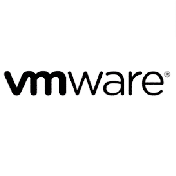Seminarinhalt
Dieser Training ist für Personen konzipiert, die Messaging Administrator in einer Microsoft 365-Bereitstellung werden möchten.
Programm
- Explore mail flow in Microsoft Exchange
- Manage mail flow in Exchange Server deployments
- Manage mail flow in Exchange Online deployments
- Manage mail flow in hybrid Exchange deployments
- Configure message transport options
- Configure SMTP domains
- Configure connectors
- Troubleshoot SMTP mail flow
- Troubleshoot shared namespace environments
- Troubleshoot Transport Layer Security encryption issues
- Troubleshoot network-based issues
- Monitor Exchange Online with Microsoft Service Health
- Troubleshoot with alert policies in Exchange Online
- Explore mail flow rules
- Examine how mail flow rules work
- Configure mail flow rules
- Explore Exchange Online Protection
- Plan message routing for Exchange Online Protection
- Examine message hygiene monitoring and reporting
- Examine Microsoft Purview Message Encryption
- Examine message headers and spam confidence levels
- Examine anti-spam and anti-malware protection
- Manage anti-spam protection
- Manage anti-malware protection
- Examine advanced anti-spam features
- Manage spoofing protection
- Manage phishing protection
- Configure transport rules
- Examine threat protection in Microsoft 365 Defender
- Explore using Configuration Analyzer to improve security policies
- Examine how Safe Attachments protect against malicious attachments
- Examine how Safe Links protects against malicious URLs
- Manage spoof intelligence
- Manage anti-phishing policies
- Manage the Tenant Allow/Block list in Microsoft 365 Defender
- Examine Attack simulation in Microsoft 365 Defender
- Examine message policy and compliance
- Explore the Microsoft 365 permission model
- Configure retention policies
- Run a message trace
- Explore sensitivity labels
- Manage inactive mailboxes
- Examine In-Place and Litigation holds
- Configure Messaging Records Management
- Analyze message tracking
- Plan and implement in-place archiving
- Explore journaling in Exchange
- Manage administrator and mailbox auditing
- Design content searches
- Manage content searches
- Manage eDiscovery cases
- Examine password policy options
- Explore self-service password management
- Implement multifactor authentication for Exchange
- Plan password policies
- Explore modern authentication
- Configure conditional access policies
- Configure workload policies and throttling
- Configure quota configurations
- Deploy Microsoft 365 add-ins
- Examine Exchange federated delegation features
- Examine Exchange federation sharing components
- Plan for federation trusts and certificates
- Implement organization relationships
- Implement sharing policies
- Explore Role-Based Access Control
- Examine management role groups
- Examine built-in management role groups
- Implement admin roles for management role assignments
- Troubleshoot admin roles
- Explore Privileged Identity Management
- Manage role groups in Exchange Online
- Implement user roles for role assignment policies
- Implement management role assignment policies
- Create new roles, role assignments, and scopes
- Explore the use of split permissions
- Explore the use of multiple-forest permissions
- Explore the differences in permissions
- Explore recipient types
- Explore resource mailboxes
- Explore shared mailboxes
- Explore linked mailboxes
- Explore groups
- Explore public folders
- Manage mailbox settings
- Manage resource mailboxes
- Manage shared mailboxes
- Create and manage mail contacts and mail users
- Manage permissions for recipients
- Create and manage groups
- Create and manage public folders
- Explore address lists
- Create and manage address lists
- Examine address book policies
- Configure offline address books
- Examine email address policies
- Examine the connection options for Exchange to Microsoft 365
- Explore the components of a hybrid deployment
- Explore Microsoft Entra Connect
- Examine the Microsoft 365 identity options for a hybrid Exchange deployment
- Compare Exchange delegated federation and Open Authentication
- Plan for Exchange hybrid configuration
- Examine Organization Configuration Transfer
- Examine Exchange Modern Hybrid and the Hybrid Agent
- Review mail flow options for a hybrid deployment
- Prepare to run the Hybrid Configuration Wizard
- Examine hybrid deployment best practices
- Explore migration options to Exchange Online
- Determine which migration option to use
- Update DNS during a Microsoft 365 migration
- Plan an IMAP migration
- Run an IMAP migration
- Move mailboxes using an IMAP migration
- Plan a cross-tenant migration
- Prepare source objects for a cross-tenant migration
- Troubleshoot directory synchronization
- Troubleshoot pass-through authentication and single sign-on
- Troubleshoot transport with Exchange Online
- Troubleshoot client access in coexistence
- Troubleshoot the Mailbox Replication service
Zielgruppen
Um eine sichere Hybridtopologie zu implementieren, die den Geschäftsanforderungen einer modernen Organisation entspricht, müssen Messaging Administrators mit anderen Workloadadministratoren und den Microsoft 365 Enterprise-Administratoren zusammenarbeiten.
Der Messaging-Administrator sollte über gute Kenntnisse in den Bereichen Authentifizierung, Lizenzierung und Integration mit Microsoft 365-Anwendungen verfügen.
Vorkenntnisse
Wichtige Information
Dieses Training wurde am 29.12.2023 seitens Microsoft eingestellt und das Examen: MS-203: Microsoft 365 Messaging ist nur noch bis 31.12.2023 verfügbar.
Dieses Training behandelte prüfungsrelevante Themen zum Examen: MS-203: Microsoft 365 Messaging
HINWEIS:
Sie benötigen nur Exchange Online Themen - wir empfehlen dieses Seminar:
SMEXonline Microsoft 365 - Exhange Online
Sie benötigen nur Exchange hybrid Themen - wir empfehlen dieses Seminar:
SMEXhybrid Microsoft 365 - hybrid Messaging




